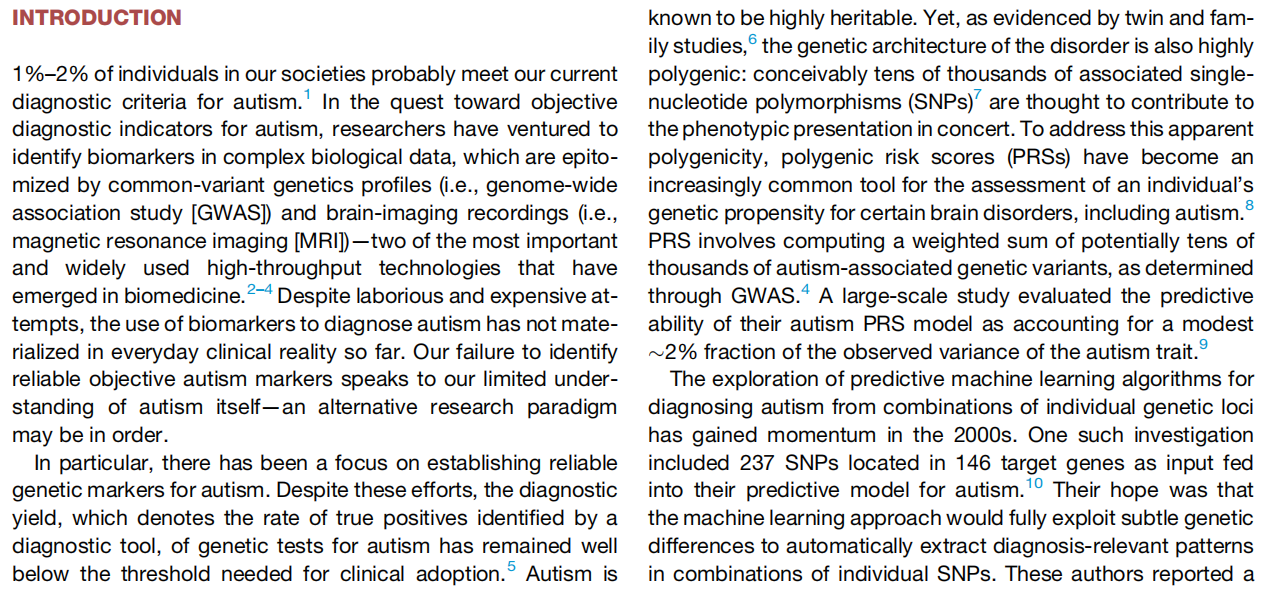
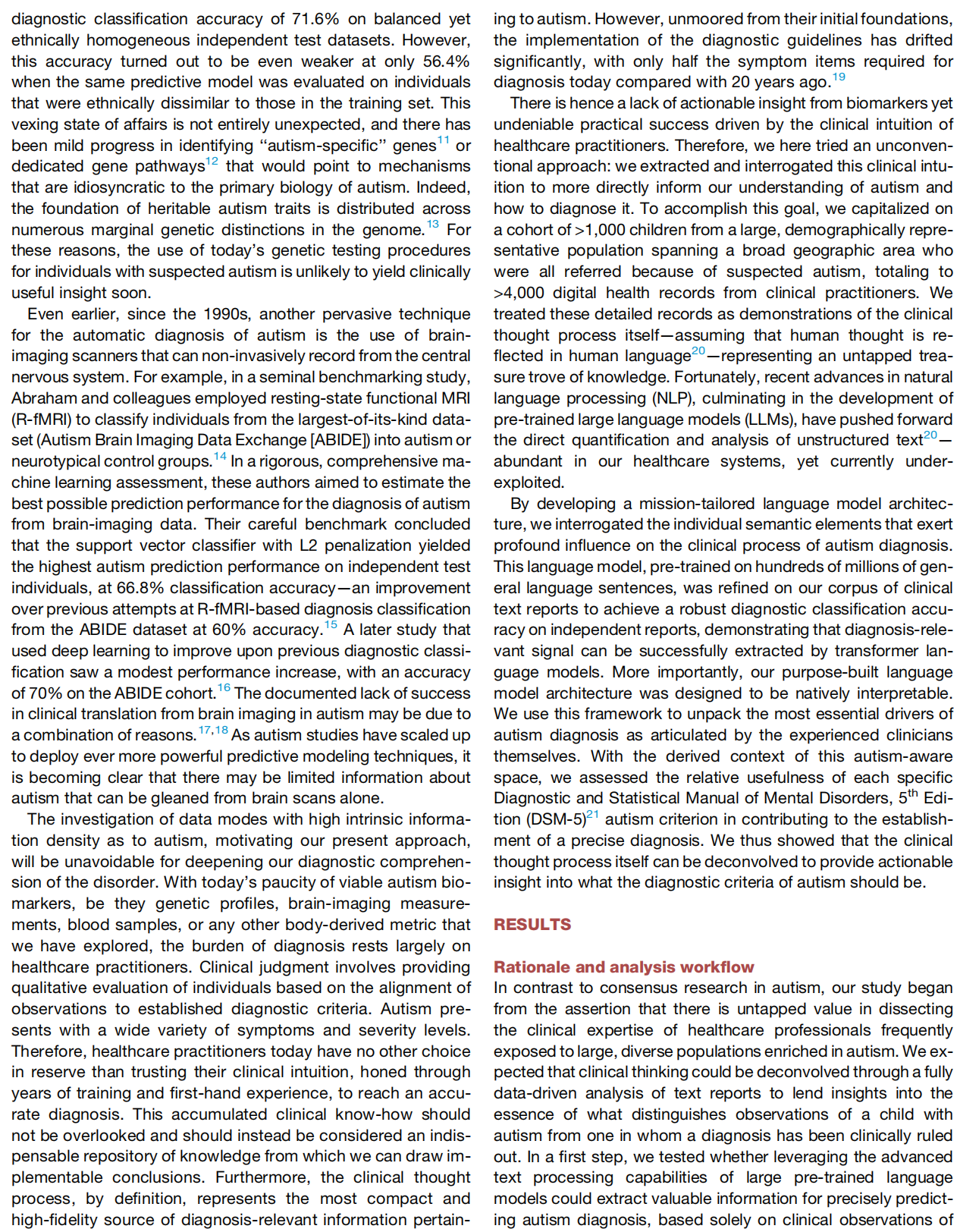
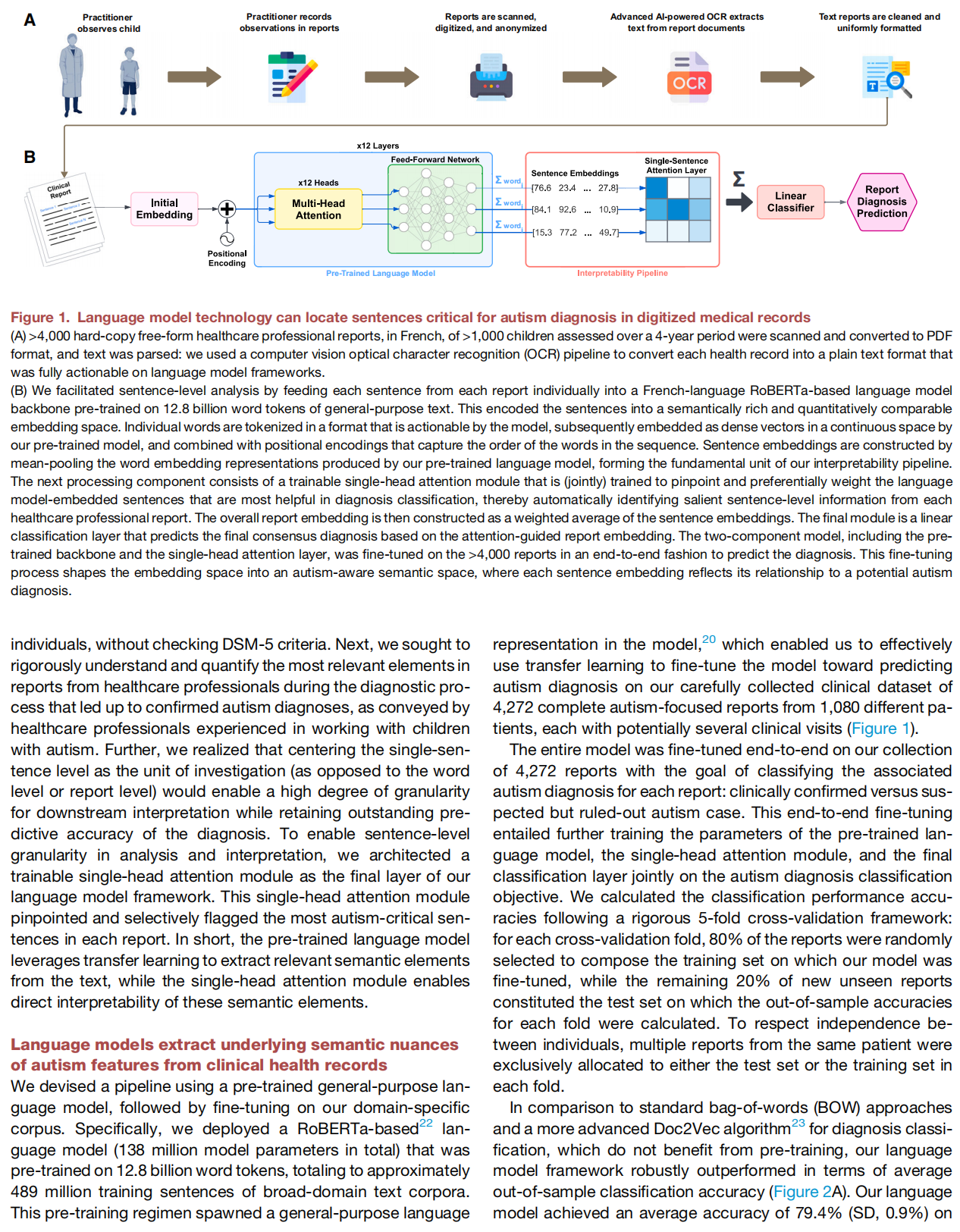
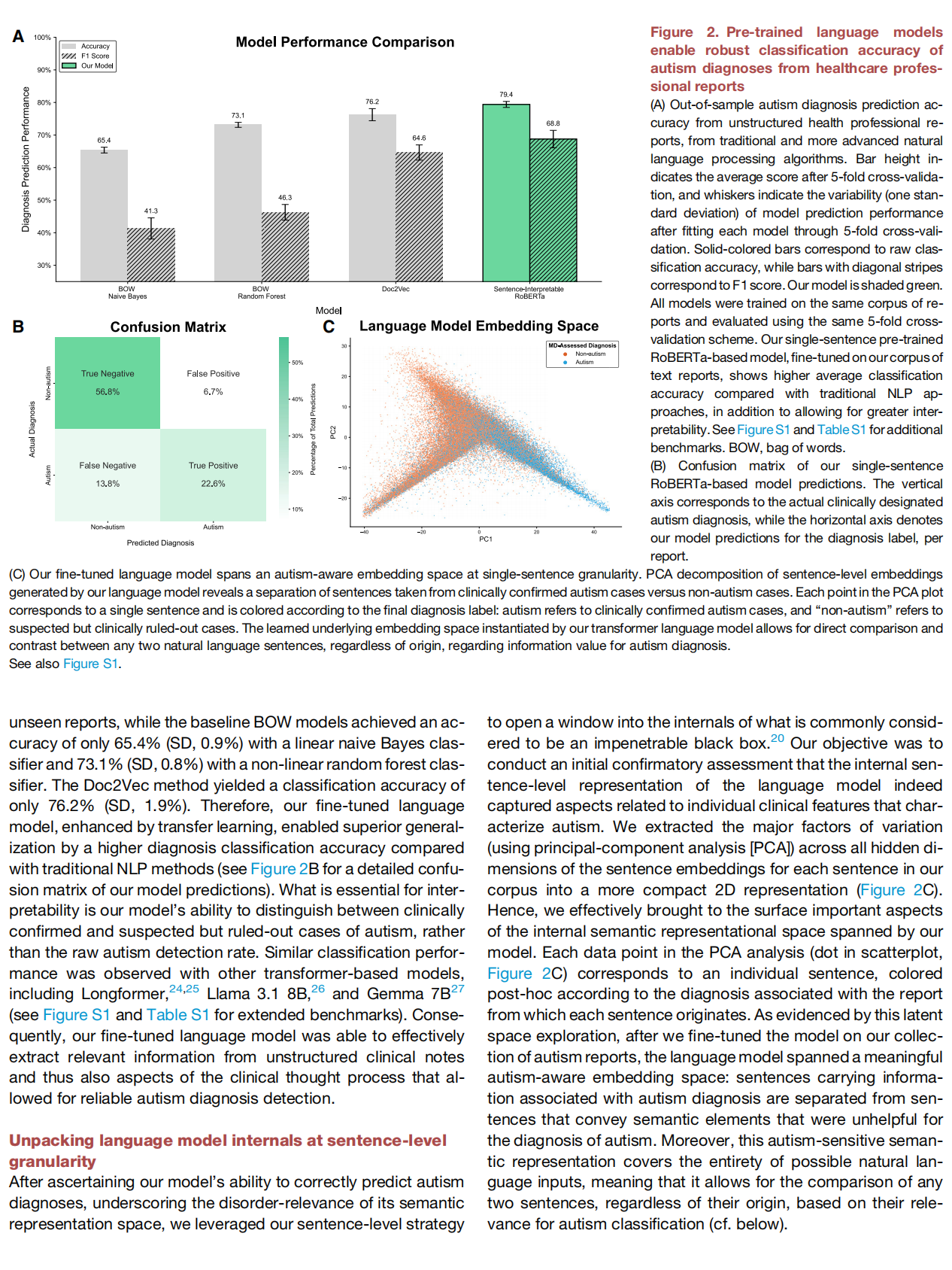
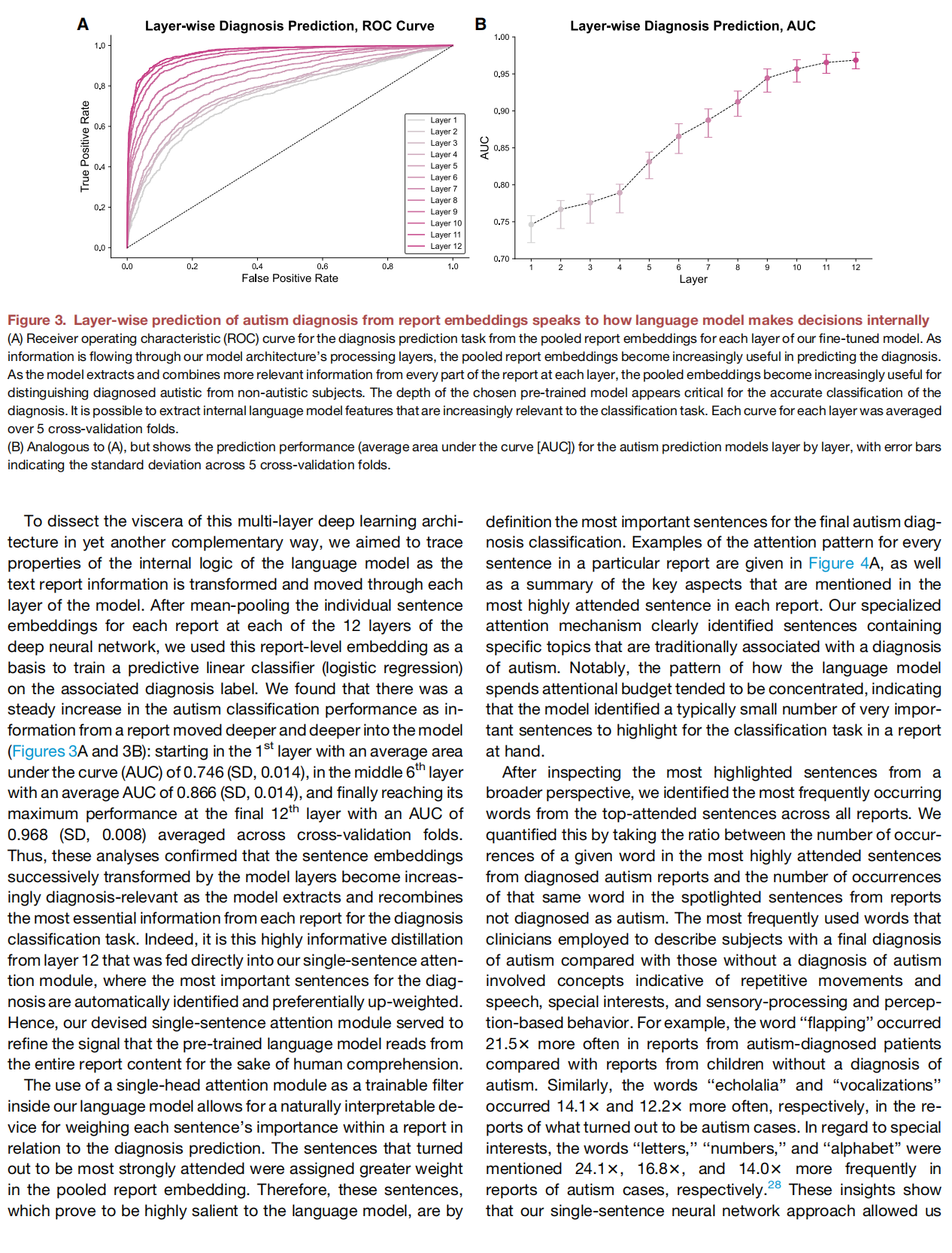
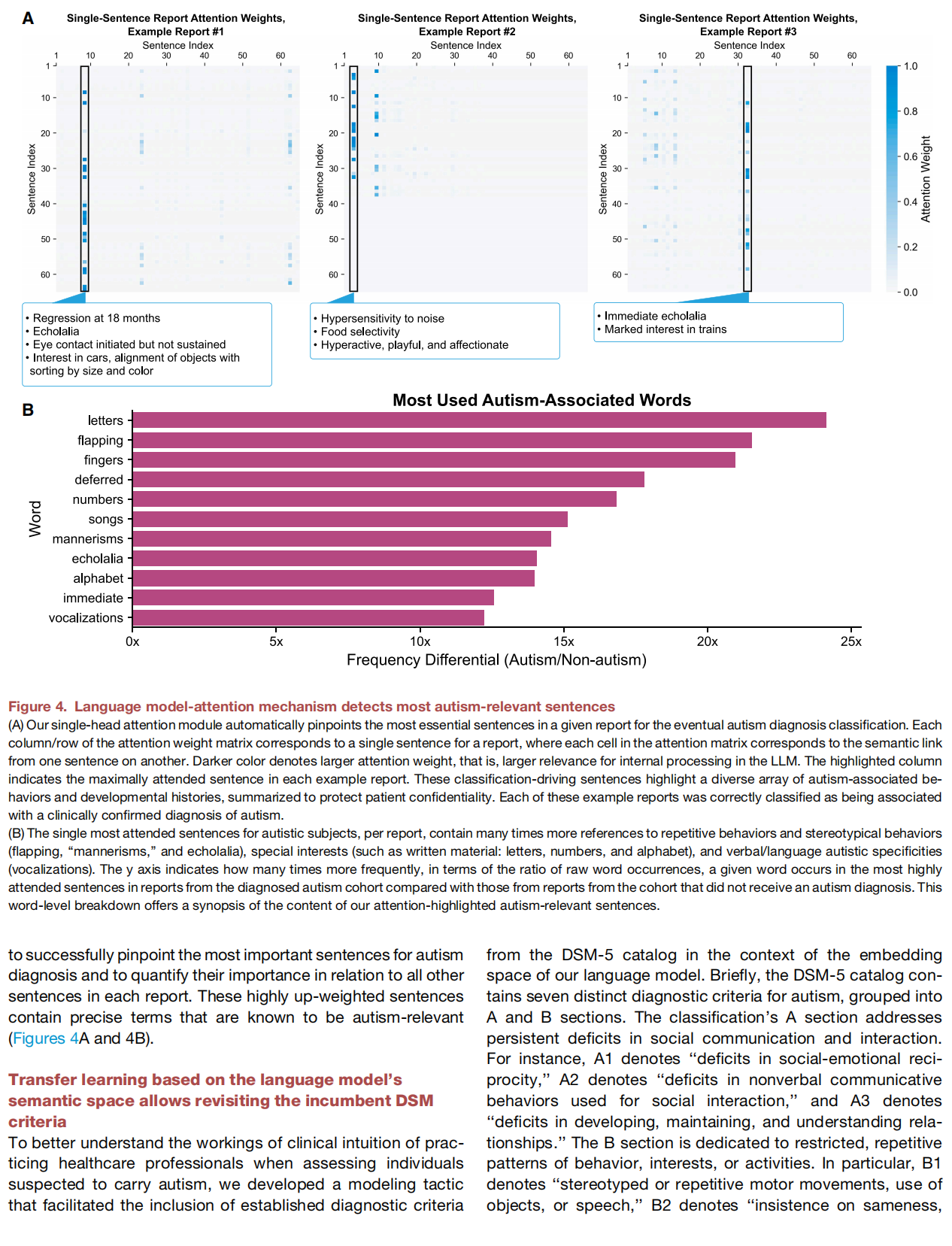
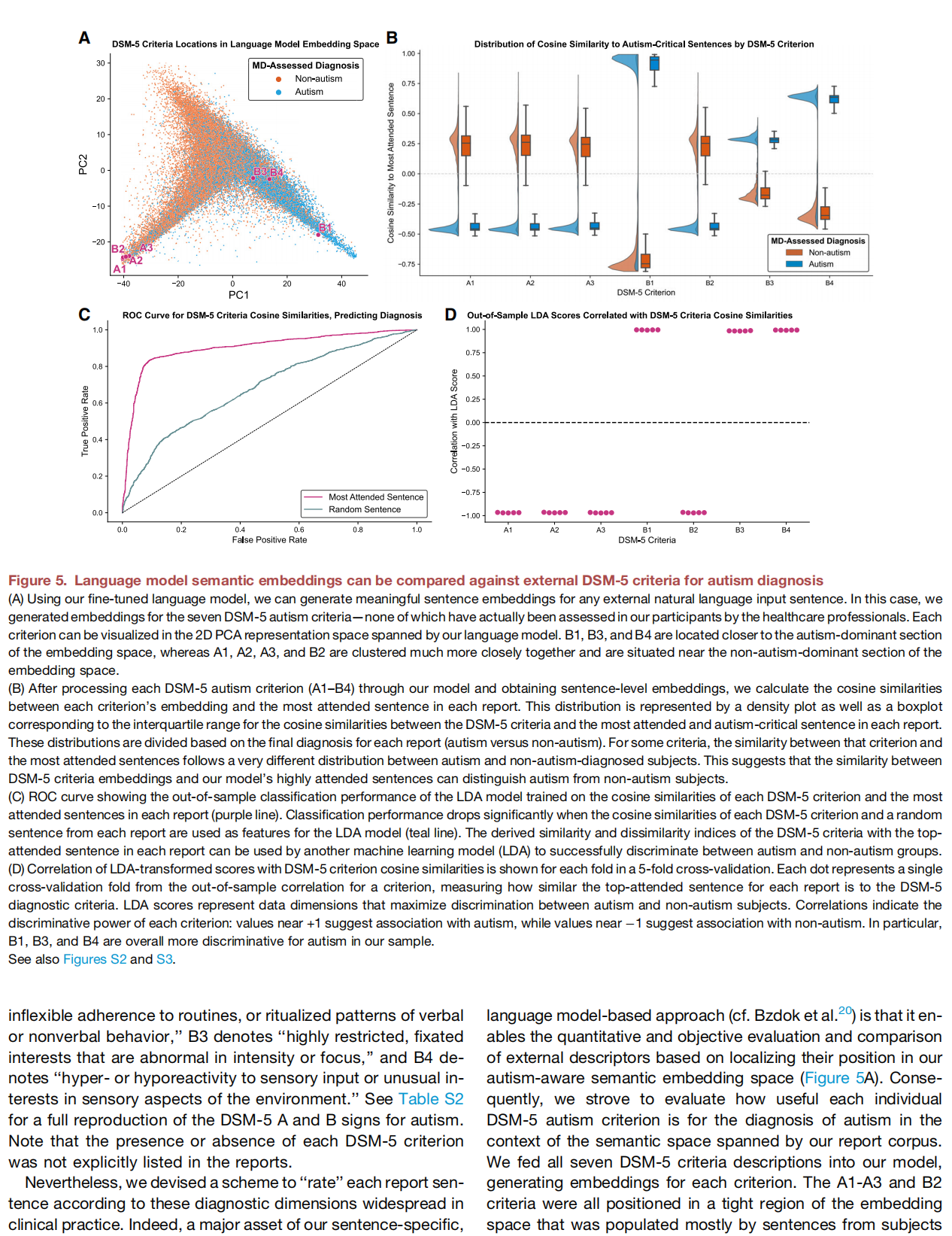
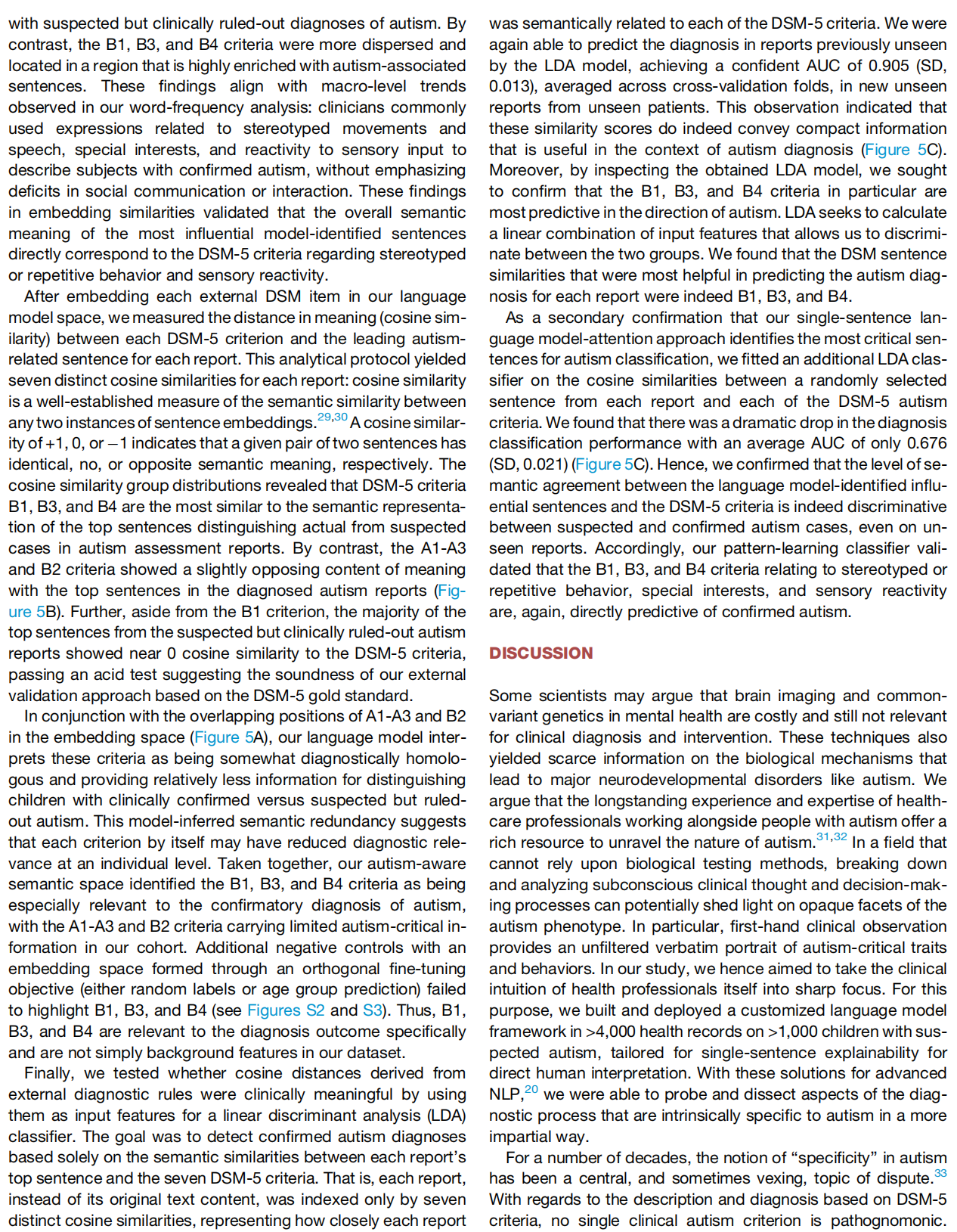
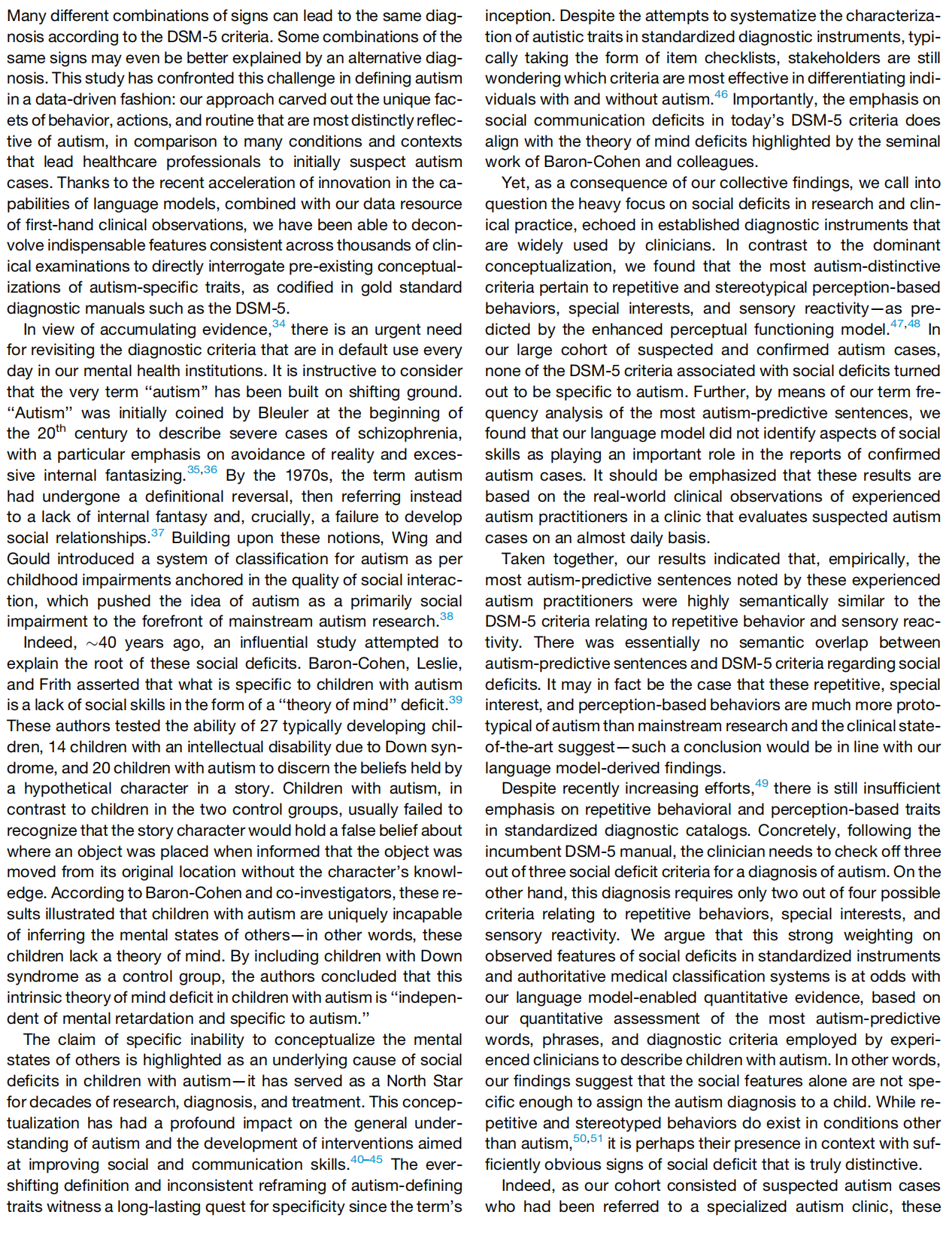
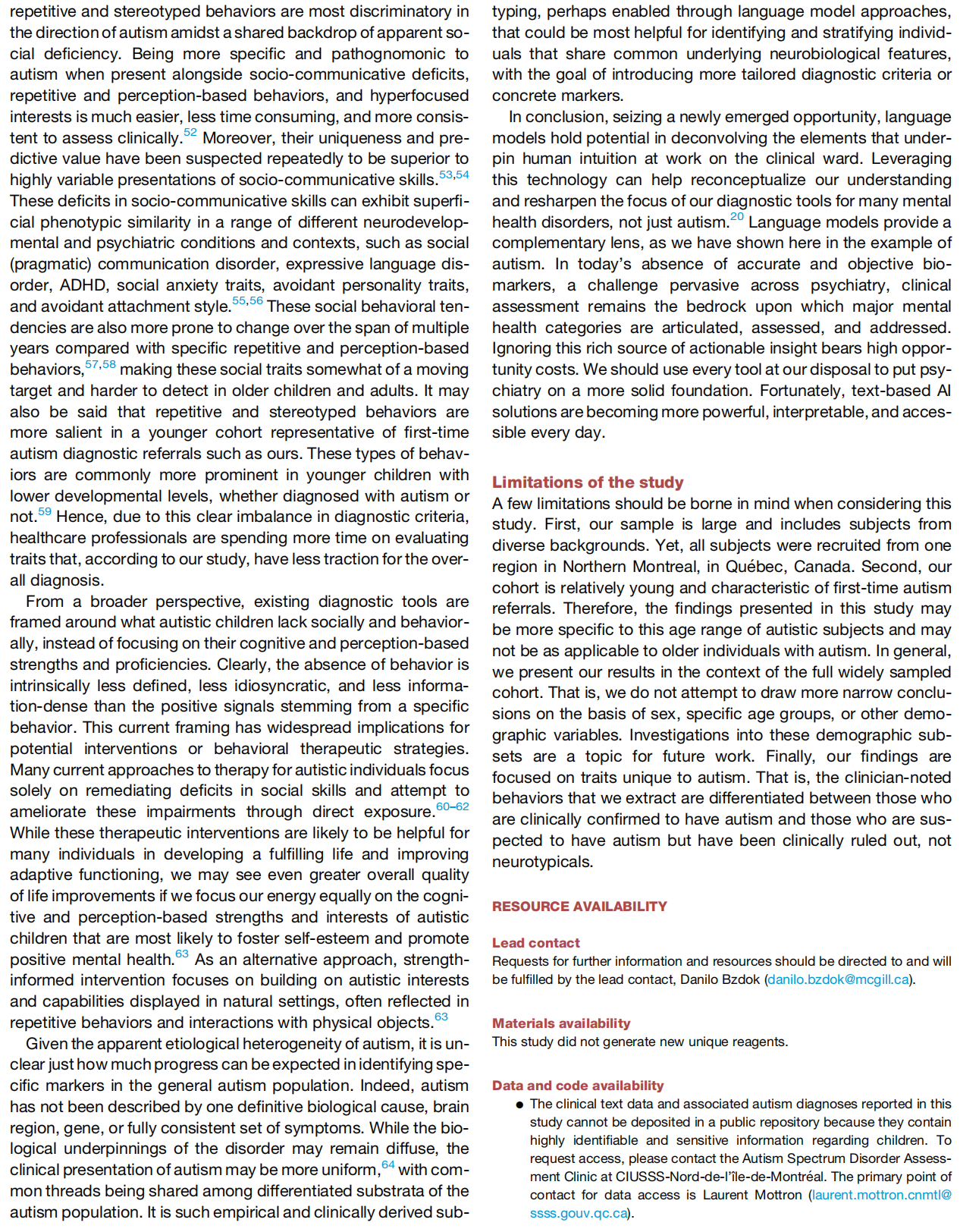
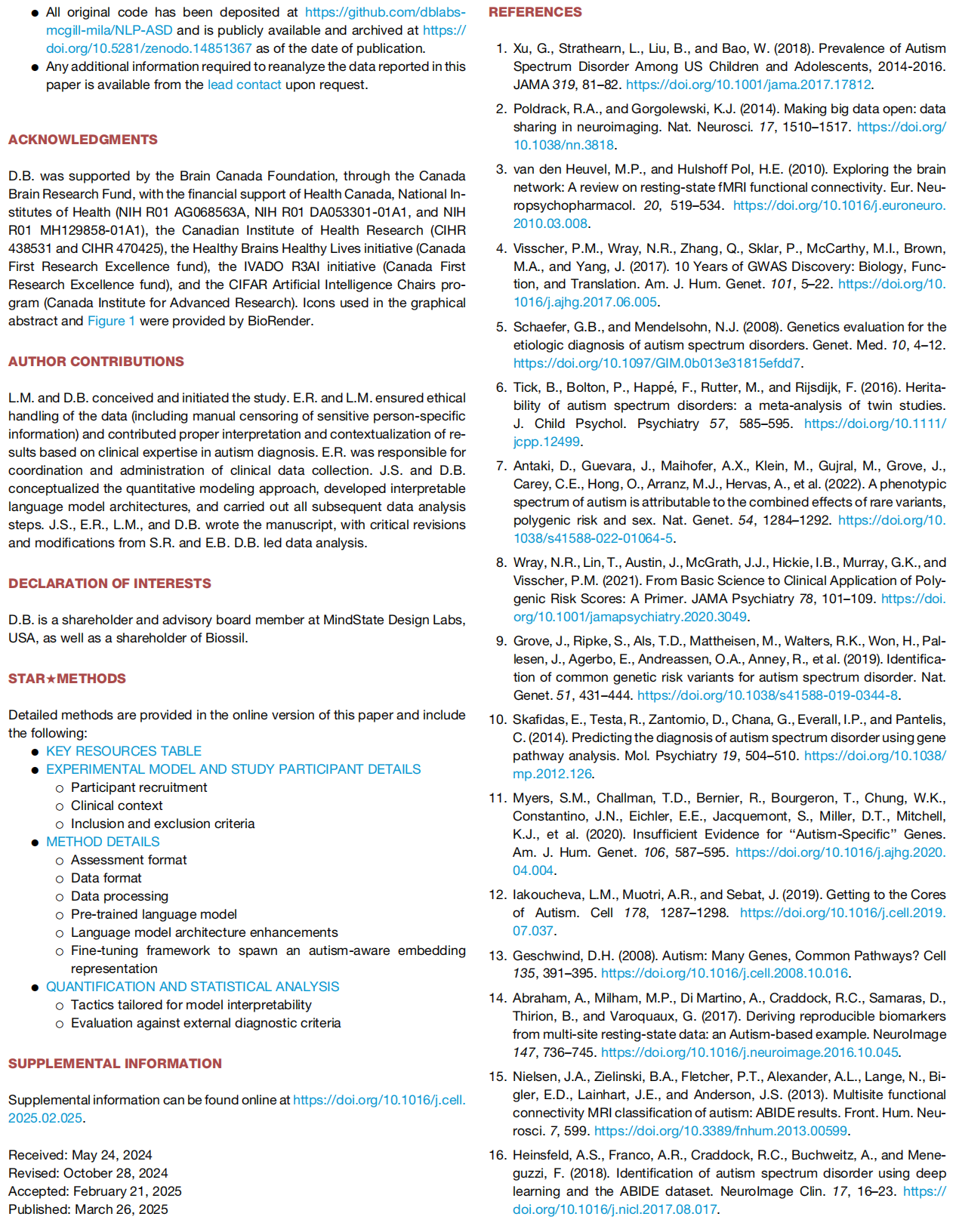
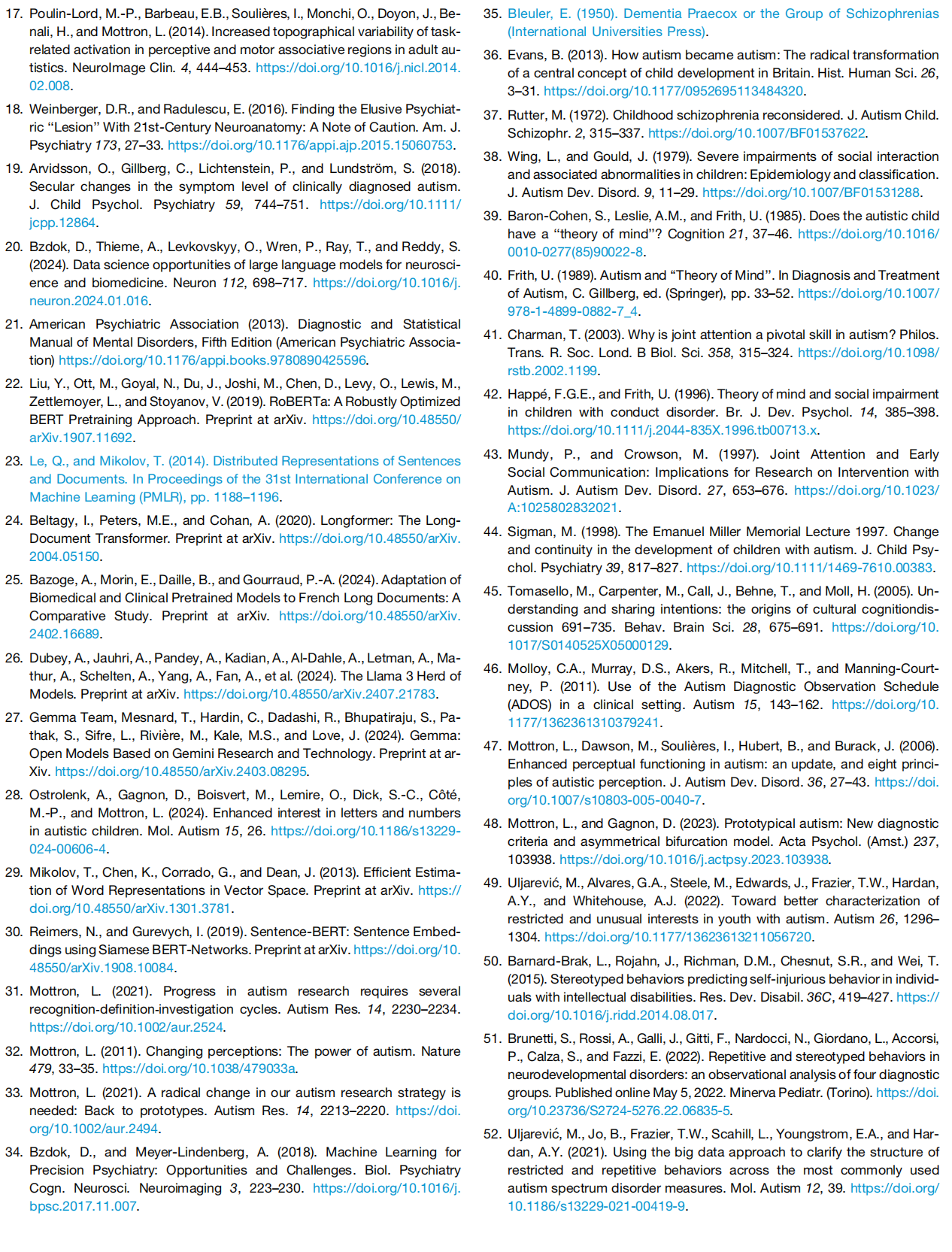
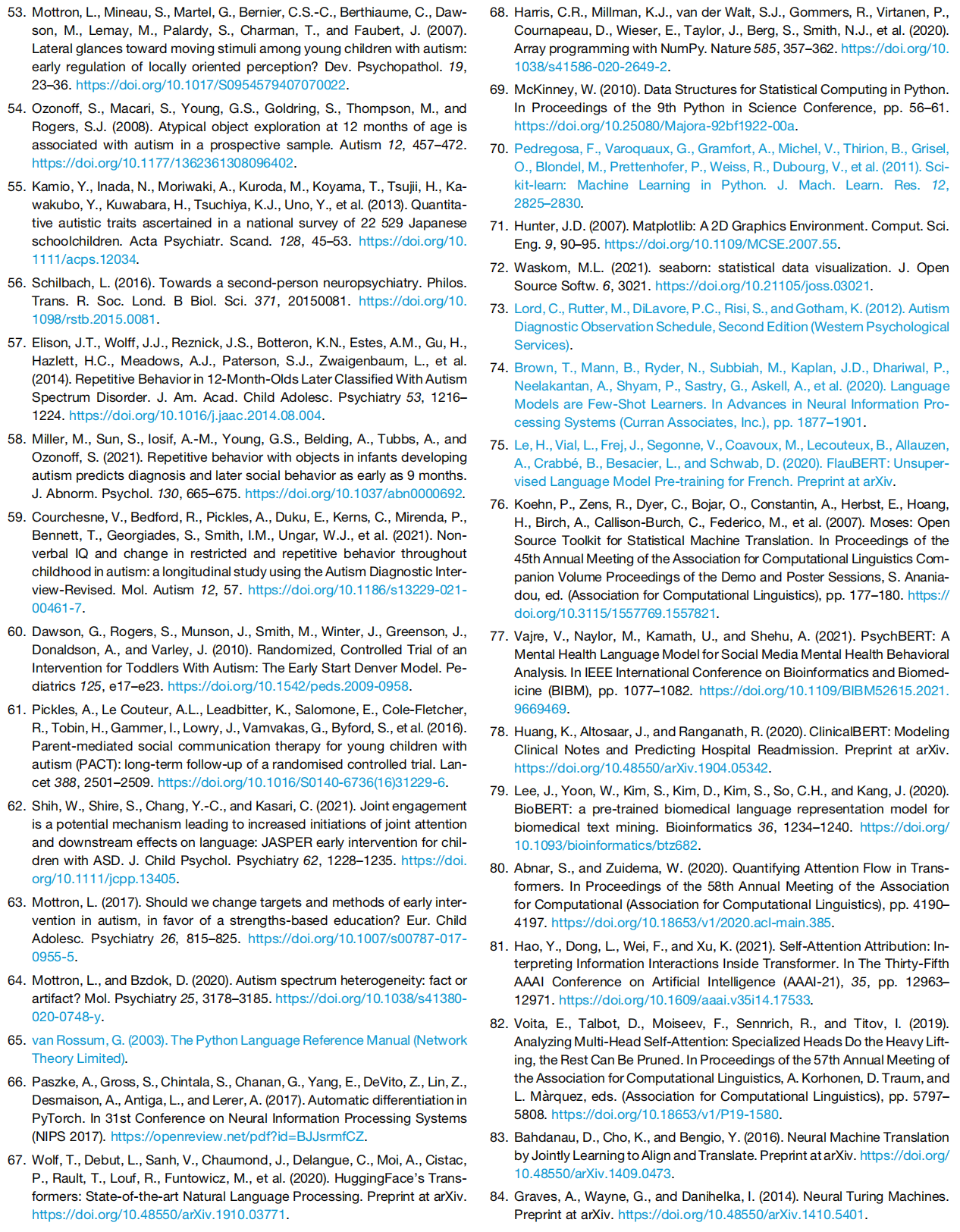

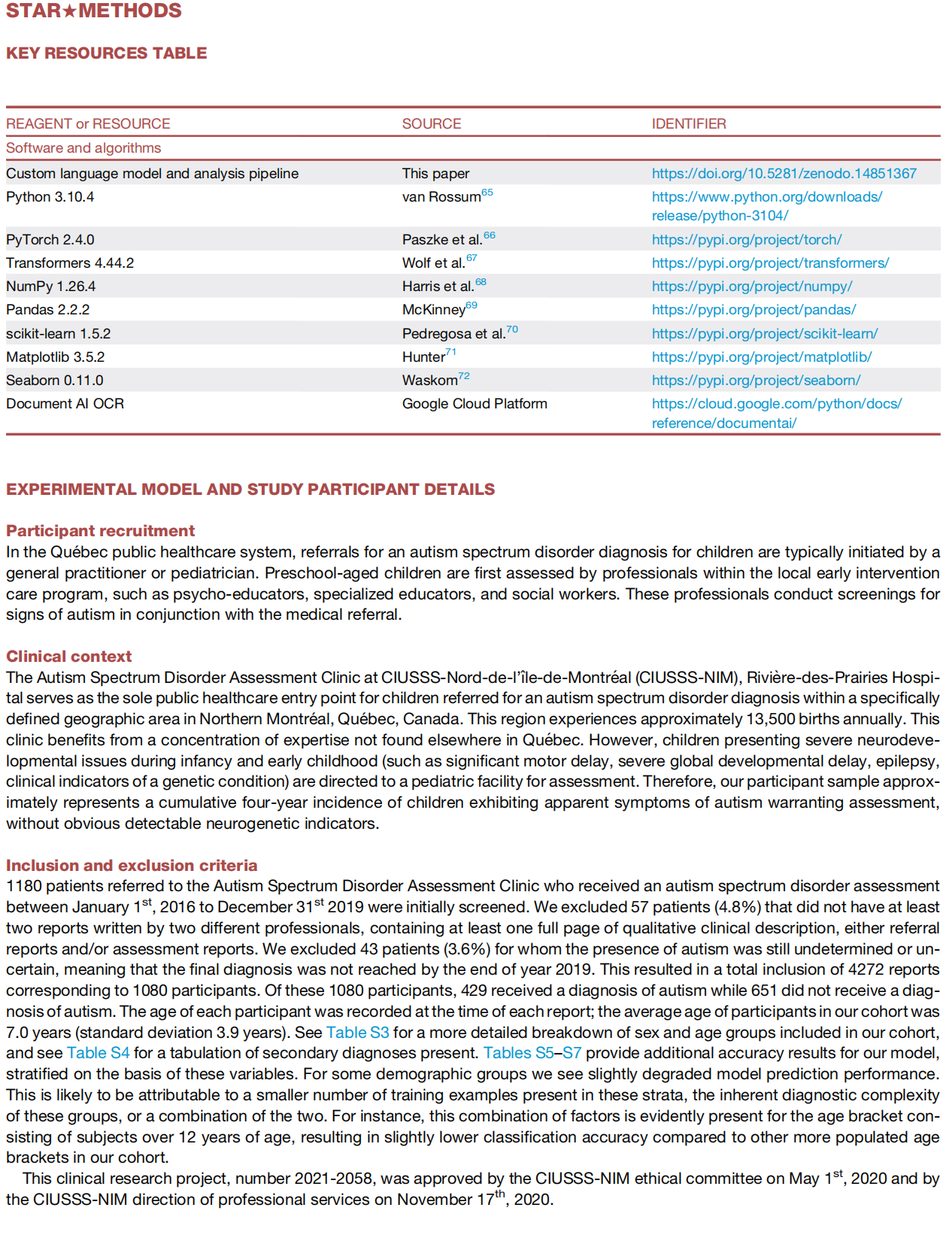
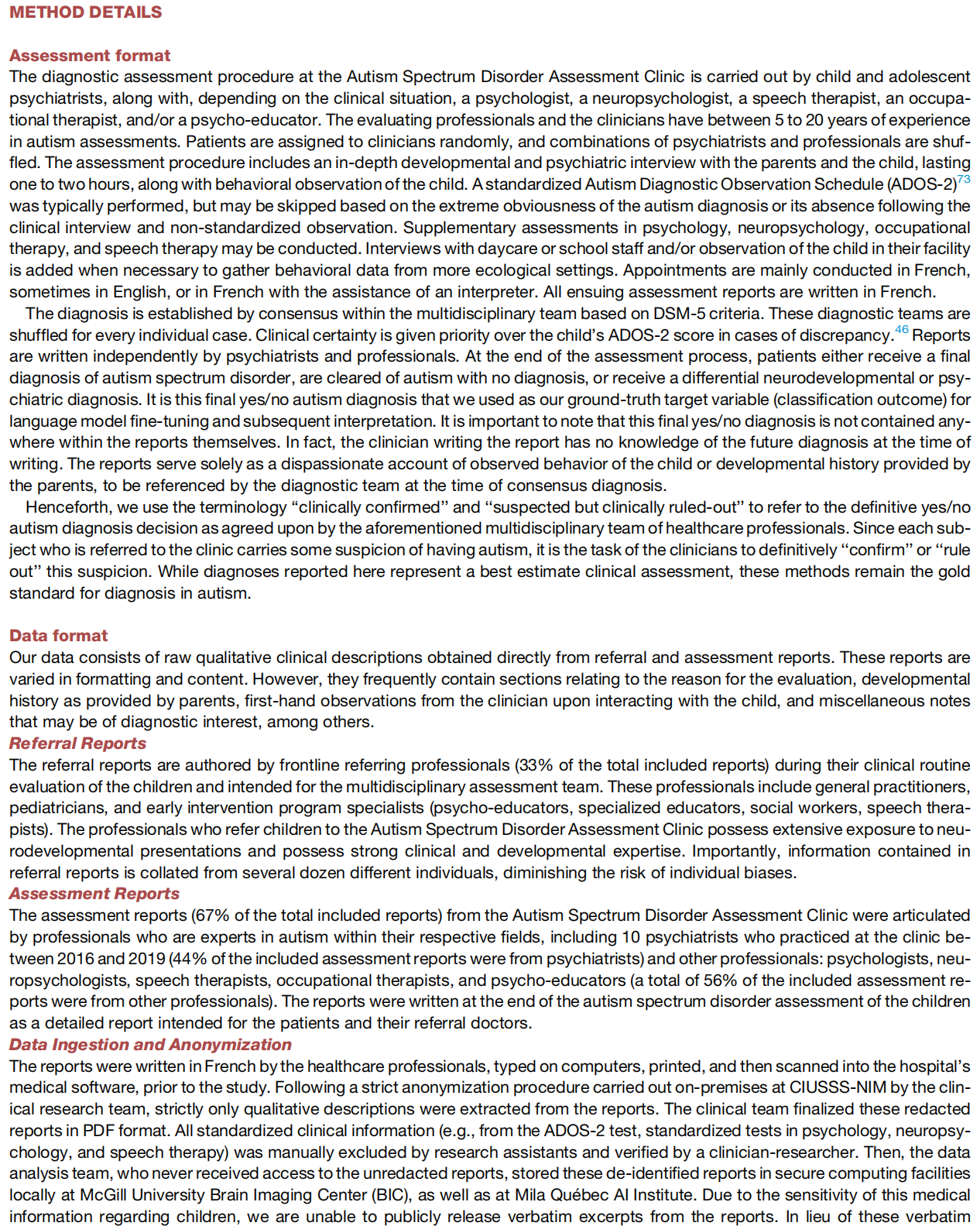
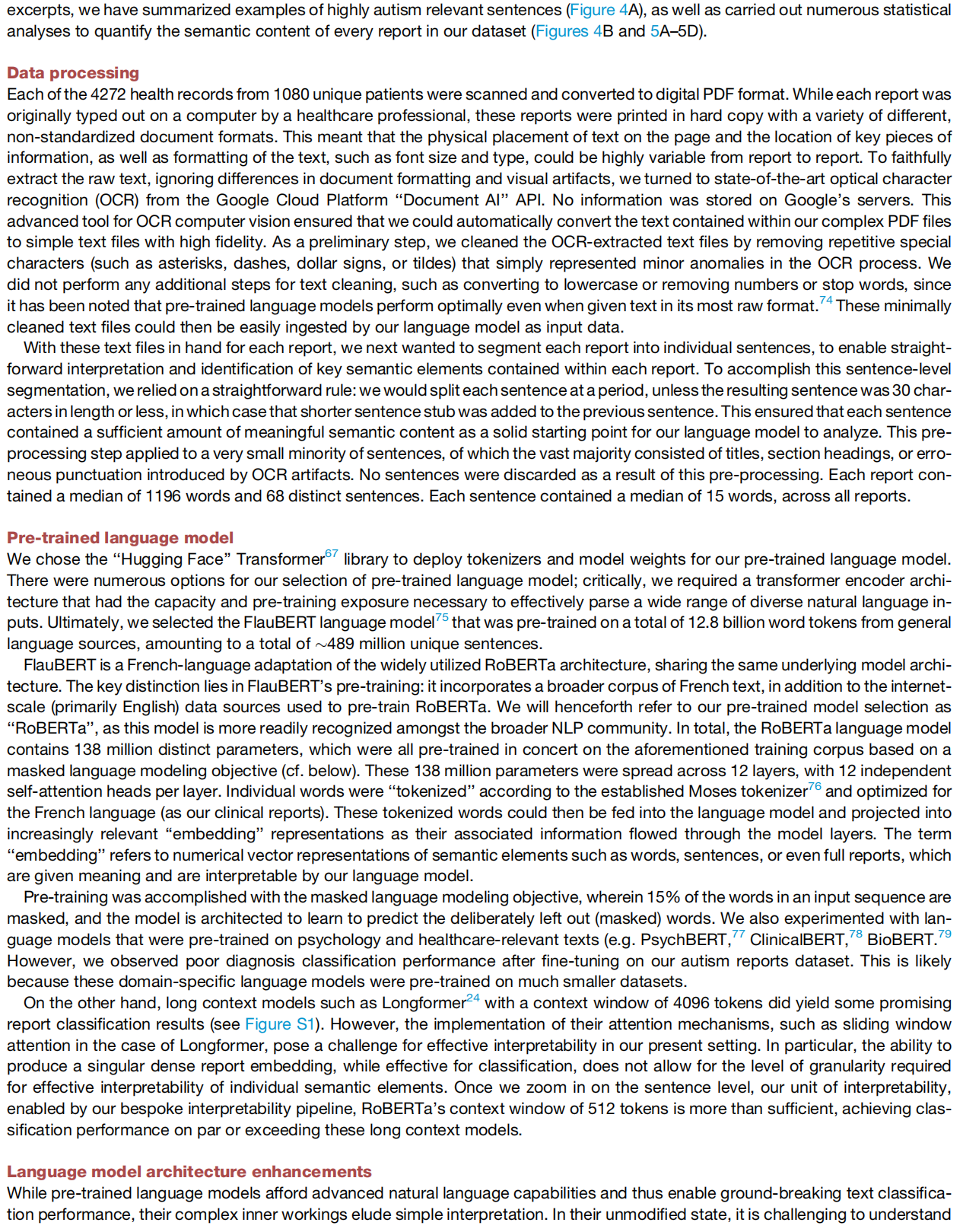
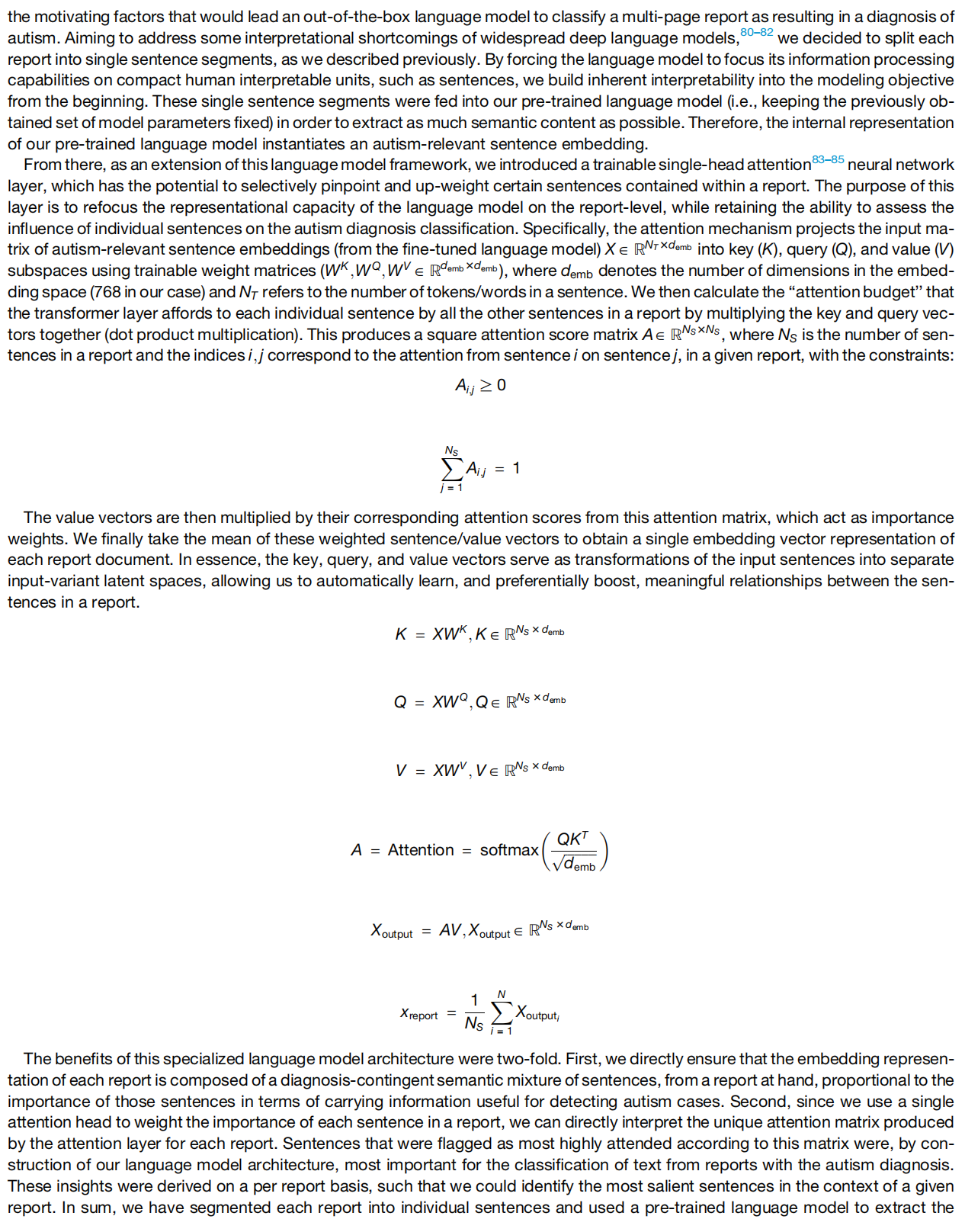
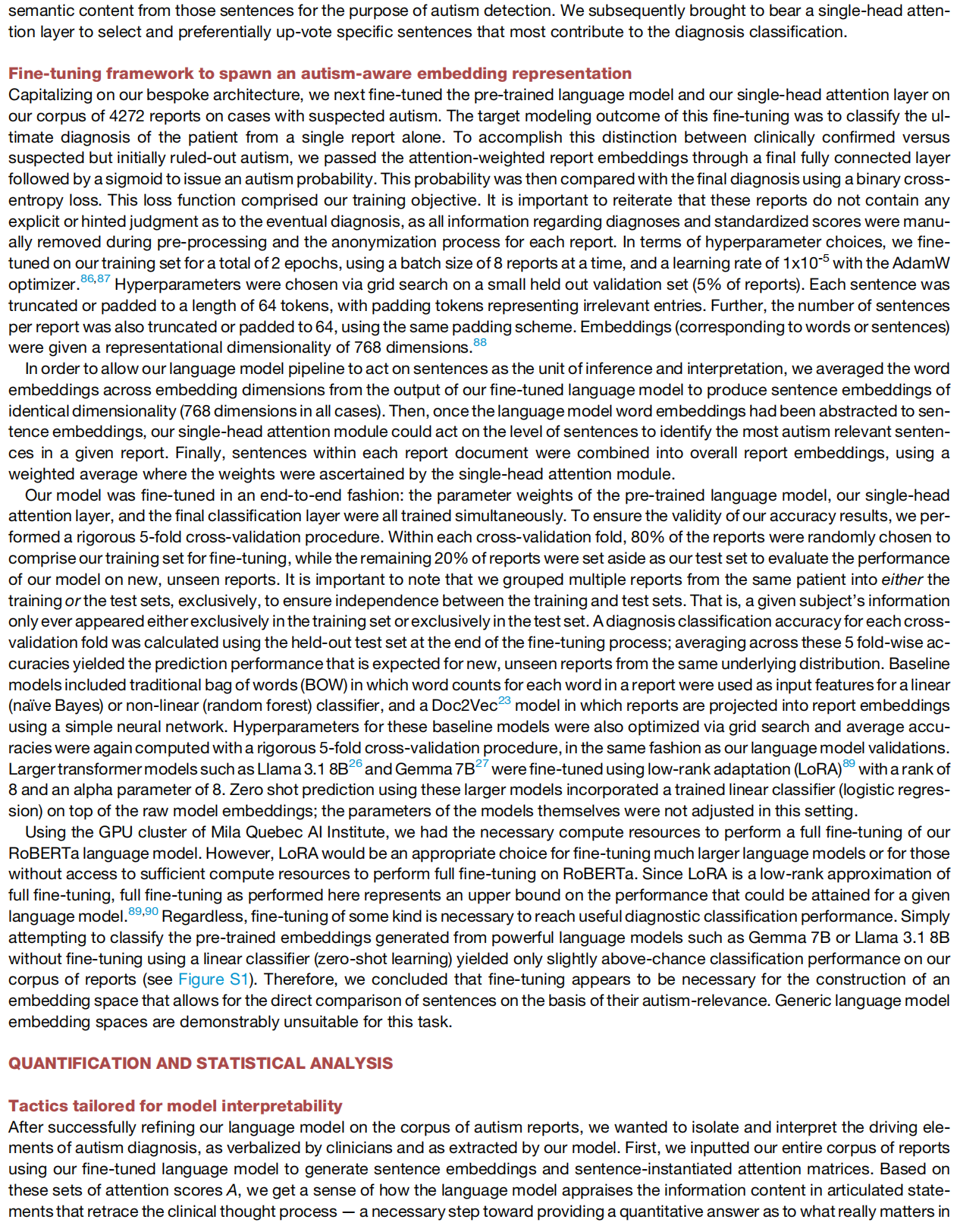
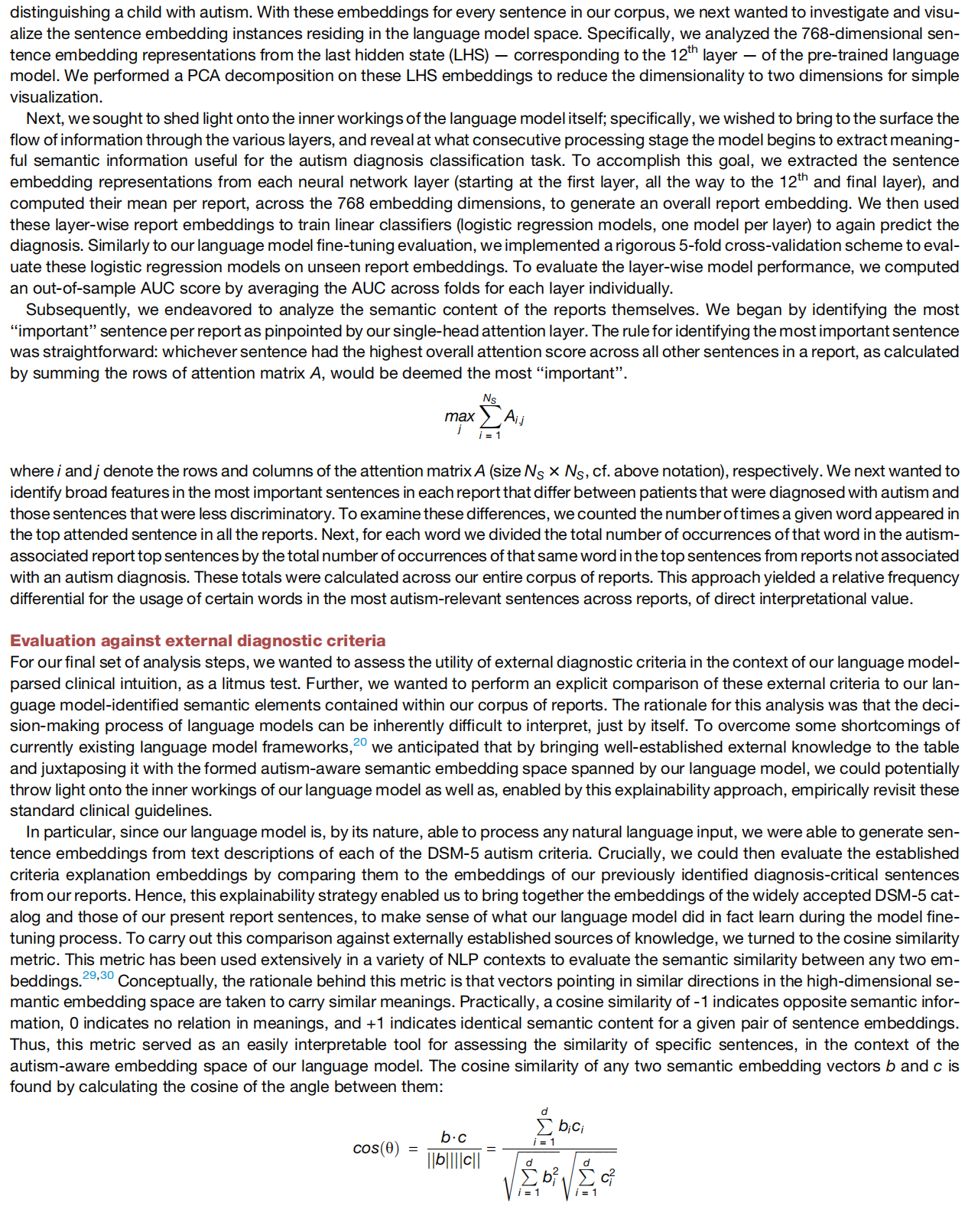
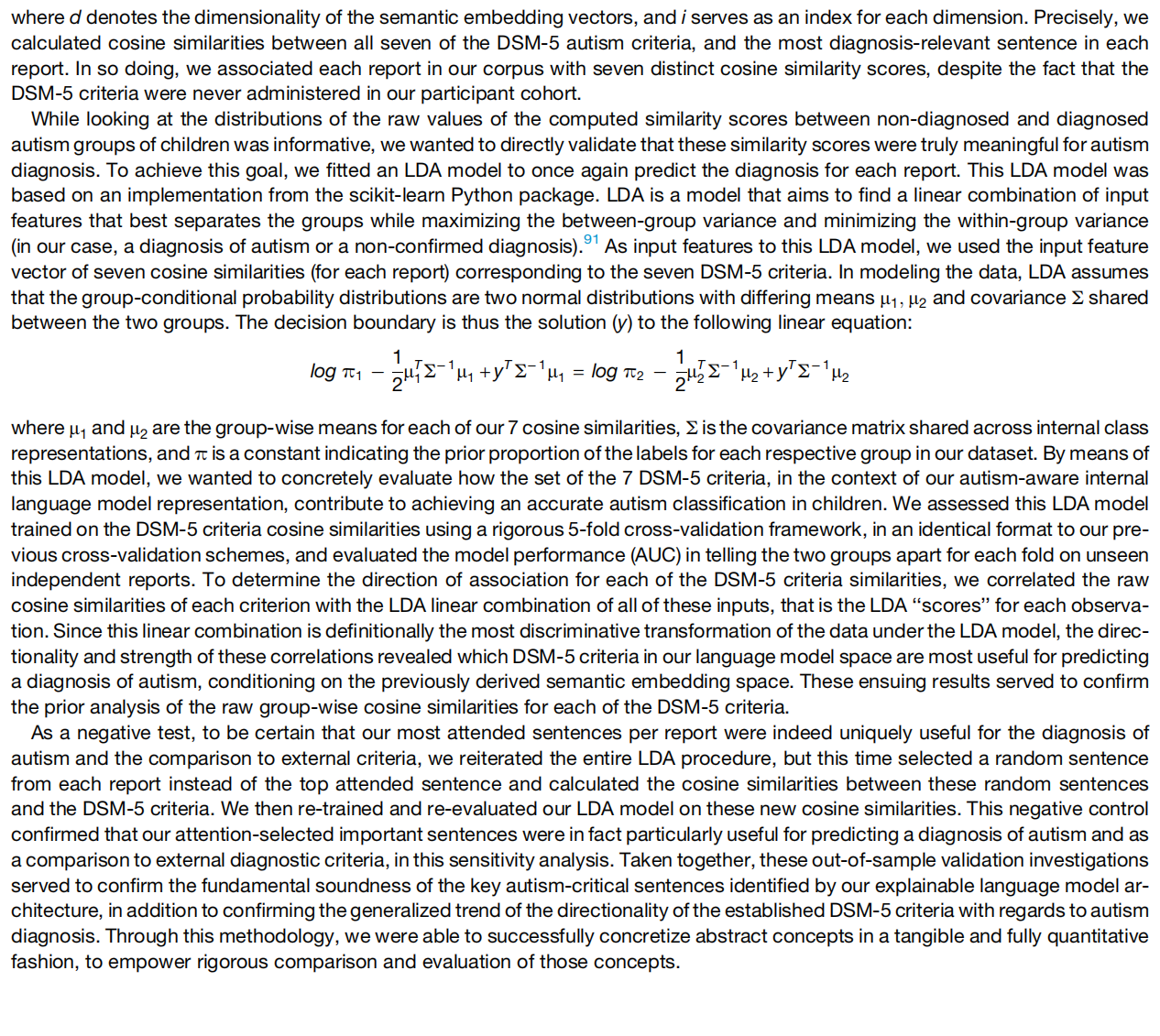
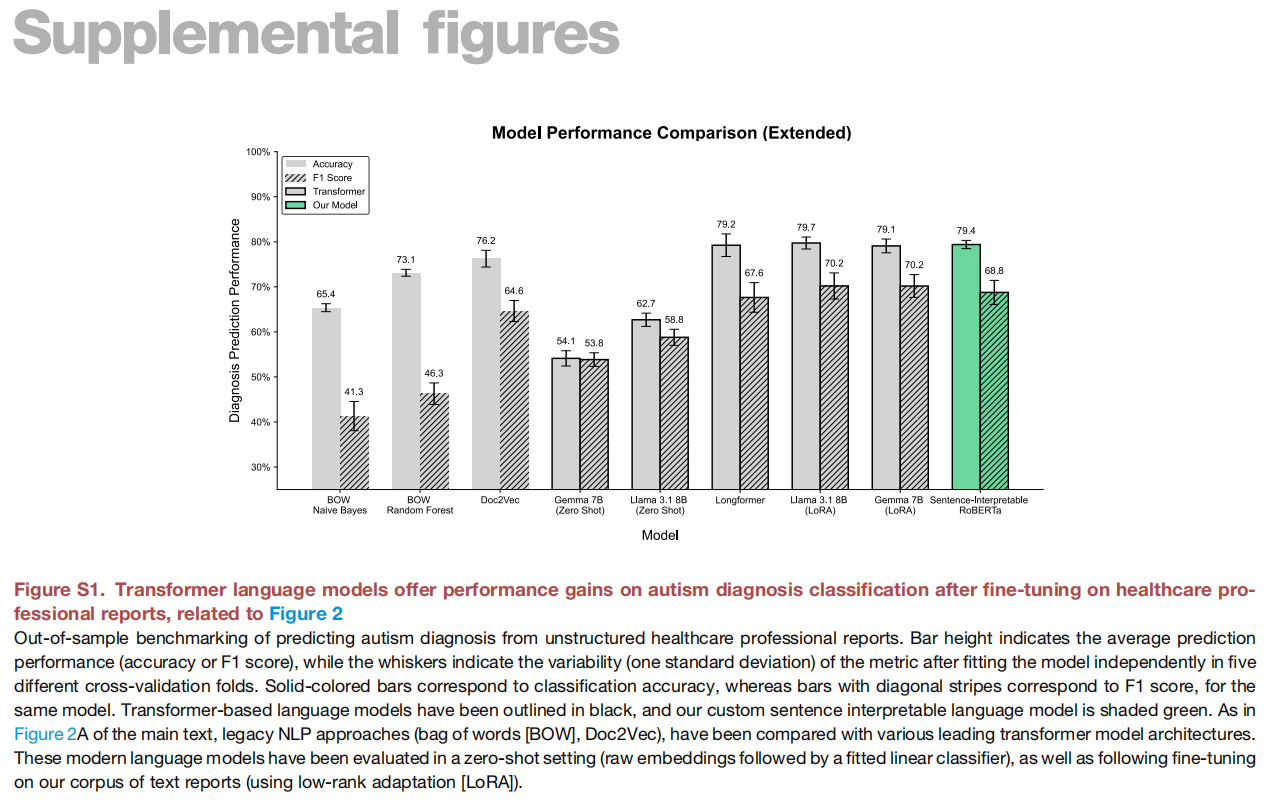
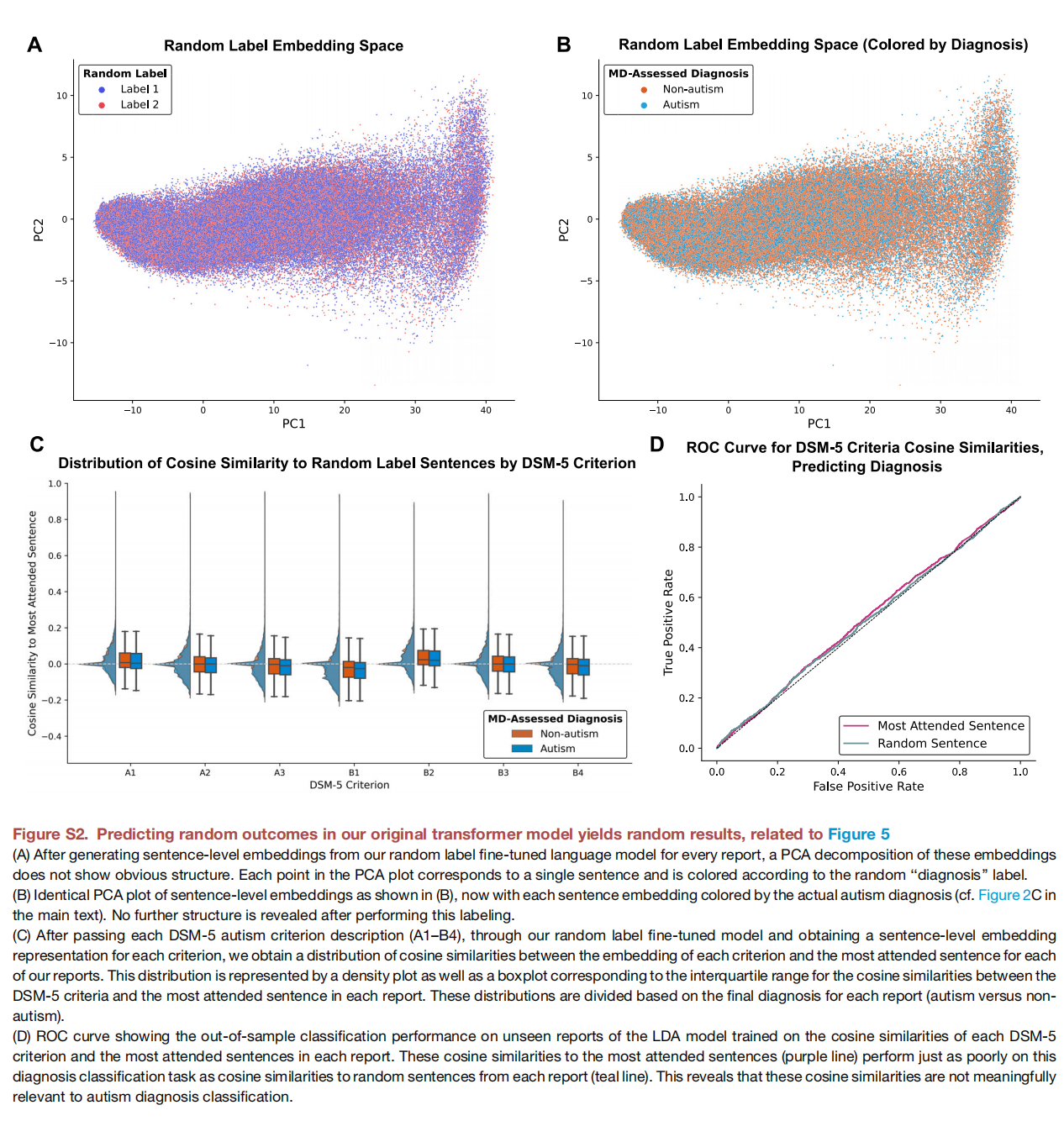
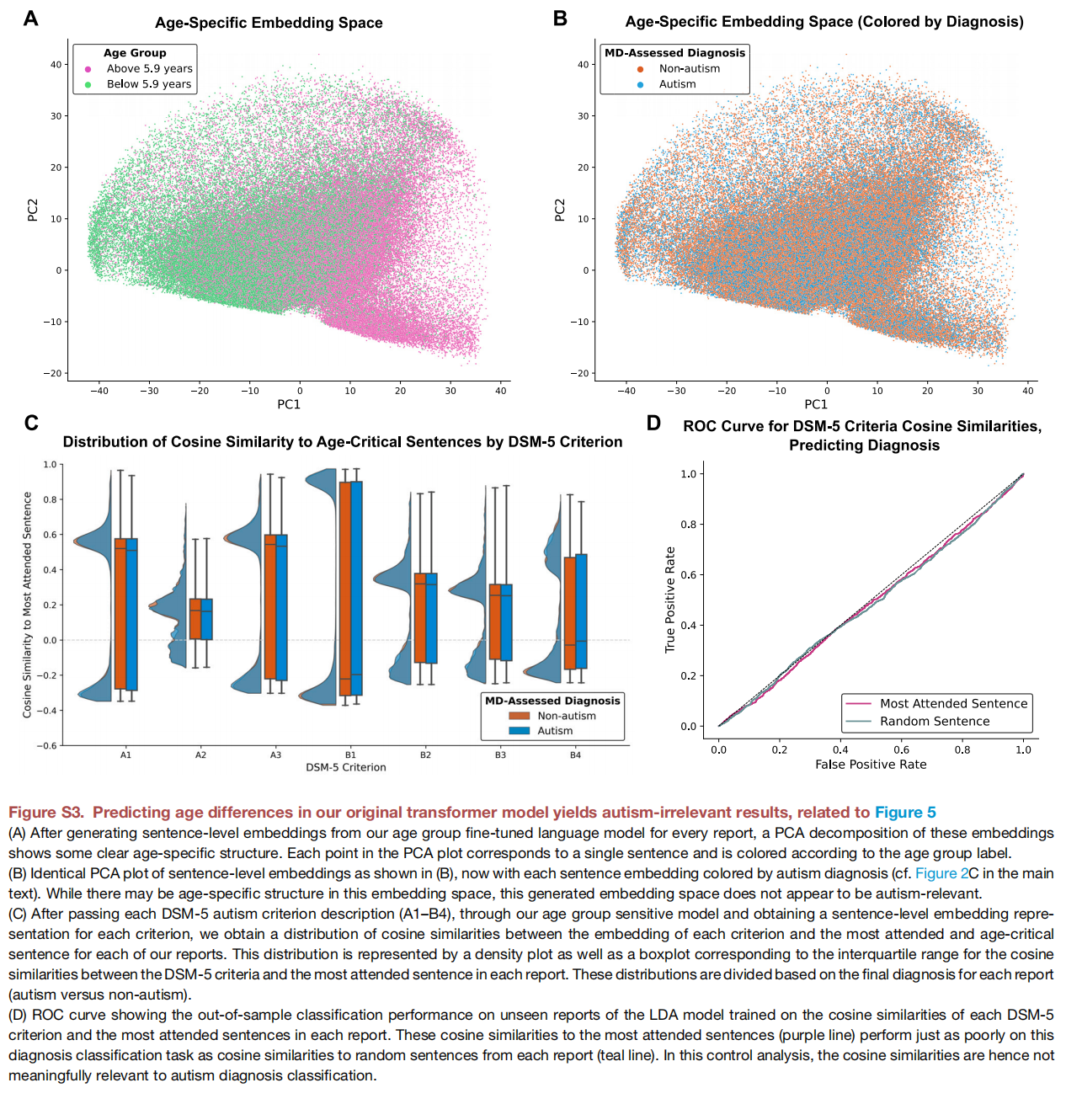
This article is excerpted from the Cell 188, 22352248, April 17, 2025 by Wound World.
Jack Stanley,1,2,6 Emmett Rabot,3,4,6 Siva Reddy,1 Eugene Belilovsky,1,5 Laurent Mottron,3,4,7 and Danilo Bzdok1,2,7,8,*
1 Mila - Que´ bec Artificial Intelligence Institute, Montre´ al, QC H2S3H1, Canada
2 The Neuro - Montre´ al Neurological Institute (MNI), McConnell Brain Imaging Centre, Department of Biomedical Engineering, Faculty of Medicine, School of Computer Science, McGill University, Montre´ al, QC H3A2B4, Canada
3 Research Center, Centre Inte´ gre´ Universitaire de Sante´ et de Services Sociaux du Nord-de-lIle-de-Montre´ al (CIUSSS-NIM), Montre´ al, QC H4K1B3, Canada
4 Universite´ de Montre´ al, Montre´ al, QC H3C3J7, Canada
5 Department of Computer Science and Software Engineering, Concordia University, Montreal, QC H3G 1M8, Canada
6 These authors contributed equally
7 These authors contributed equally
8 Lead contact
*Correspondence: 该Email地址已收到反垃圾邮件插件保护。要显示它您需要在浏览器中启用JavaScript。
https://doi.org/10.1016/j.cell.2025.02.025
SUMMARY
Efforts to use genome-wide assays or brain scans to diagnose autism have seen diminishing returns. Yet the clinical intuition of healthcare professionals, based on longstanding first-hand experience, remains the gold standard for diagnosis of autism. We leveraged deep learning to deconstruct and interrogate the logic of expert clinician intuition from clinical reports to inform our understanding of autism. After pre-training on hundreds of millions of general sentences, we finessed large language models (LLMs) on >4,000 free-form health records from healthcare professionals to distinguish confirmed versus suspected autism cases. By introducing an explainability strategy, our extended language model architecture could pin down the most salient single sentences in what drives clinical thinking toward correct diagnoses. Our framework flagged the most autism-critical DSM-5 criteria to be stereotyped repetitive behaviors, special interests, and perception-based behaviors, which challenges today,s focus on deficits in social interplay, suggesting necessary revision of long-trusted diagnostic criteria in gold-standard instruments.
























This article is excerpted from the Cell 188, 22352248, April 17, 2025 by Wound World.
